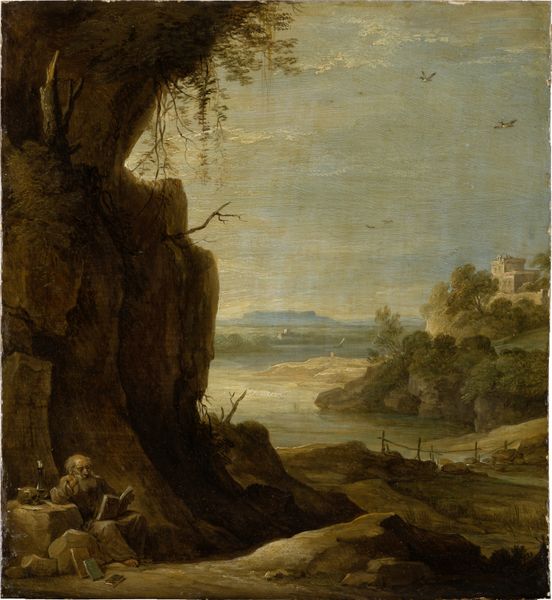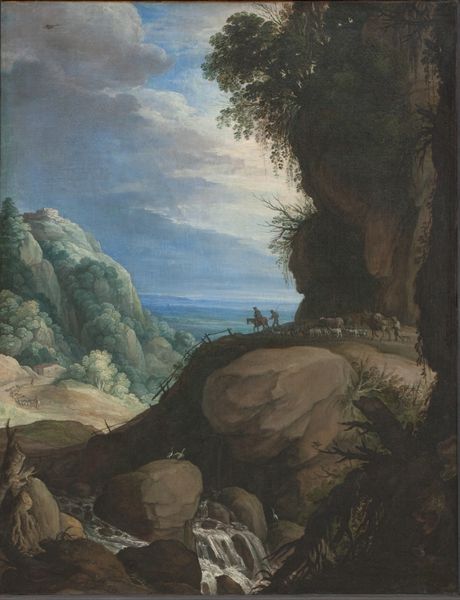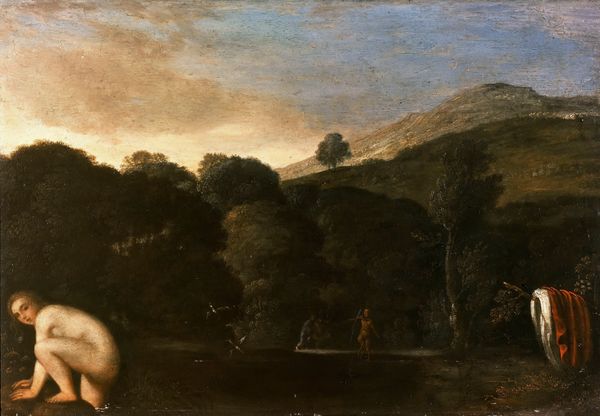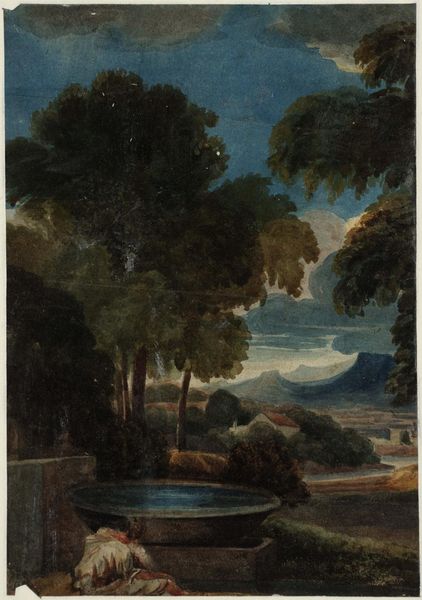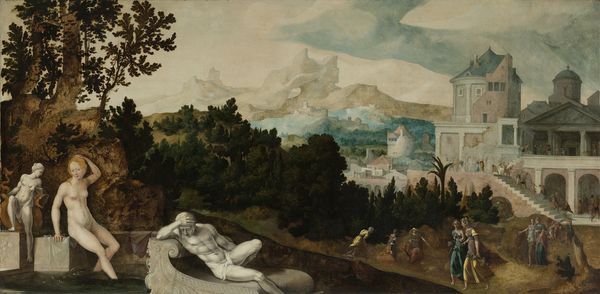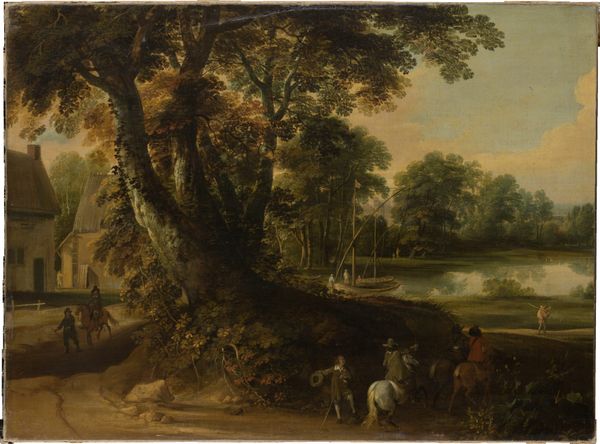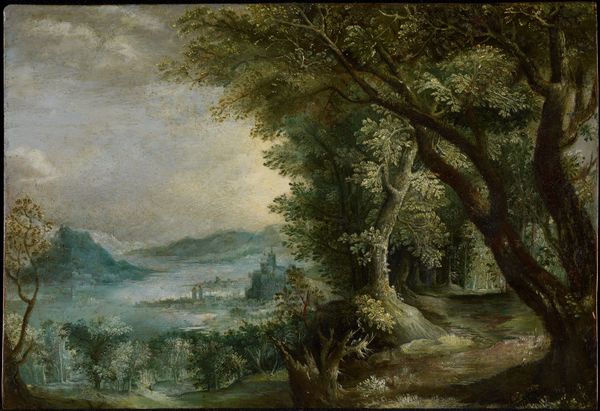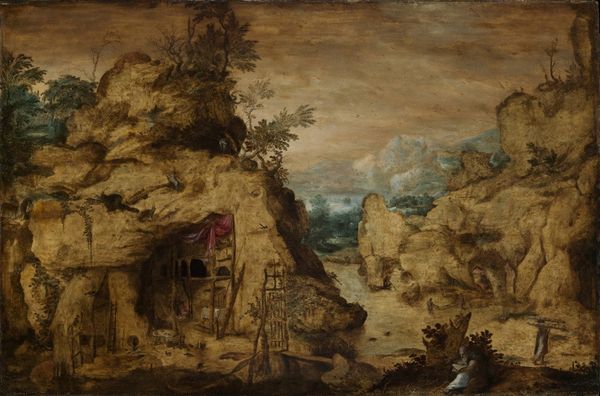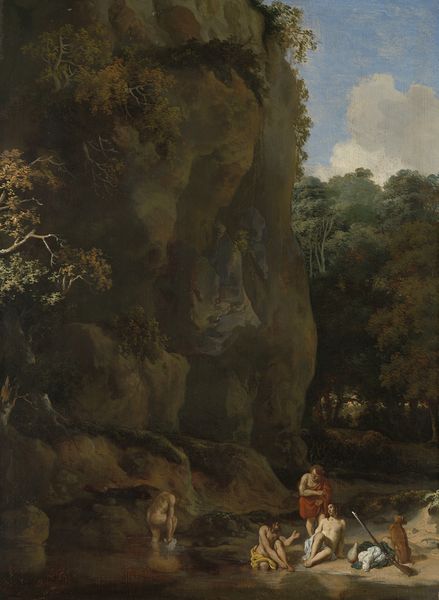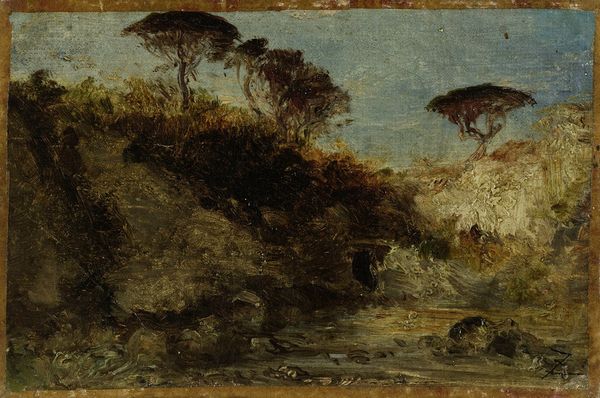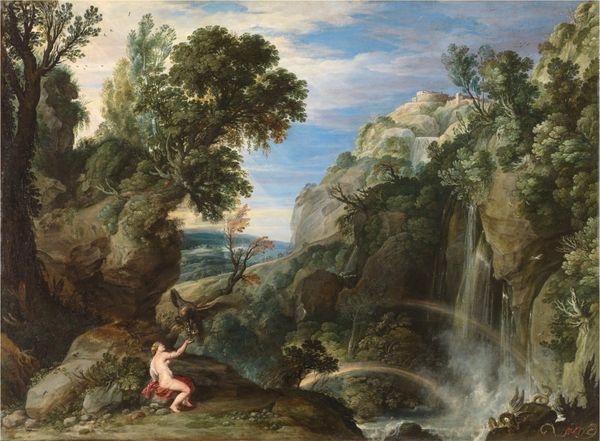
painting, oil-paint
#
baroque
#
painting
#
oil-paint
#
landscape
#
figuration
#
history-painting
#
realism
Dimensions: 74 x 163 cm
Copyright: Public domain
Juan Bautista Maíno painted Saint John the Evangelist on Patmos in the early 17th century in Spain. The painting depicts John in exile, a common theme that resonated during a period marked by religious and political turmoil. This image creates meaning through its visual codes, blending the natural with the divine. The serene landscape contrasts with the internal struggle suggested by John's upward gaze, reflecting a culture grappling with faith and doubt. The socio-political context of Counter-Reformation Spain influenced the artwork, as the Catholic Church sought to reinforce its authority through art. Maíno's depiction of John as both a scholar and a contemplative figure speaks to the period's intellectual and spiritual debates, while subtly critiquing the institutions of art. To truly understand this painting, we need to consider the intellectual history of the church at this time, as well as the political forces shaping artistic production. By delving into these sources, we recognize the significance of art as a reflection of its social and institutional context.
Comments
No comments
Be the first to comment and join the conversation on the ultimate creative platform.
